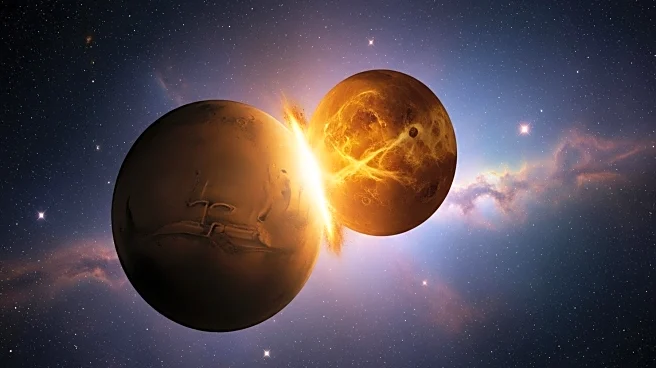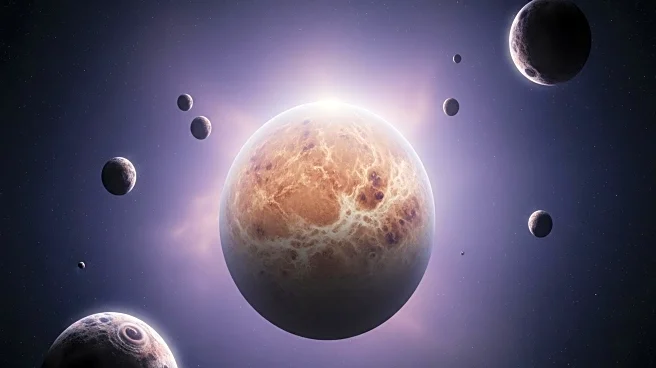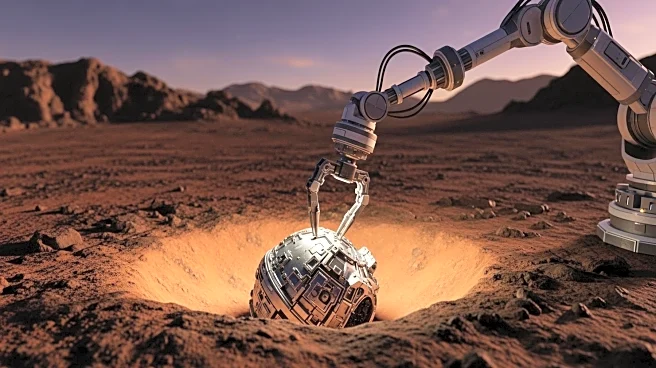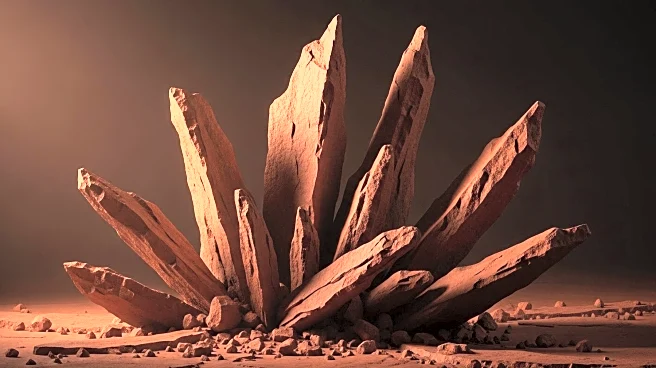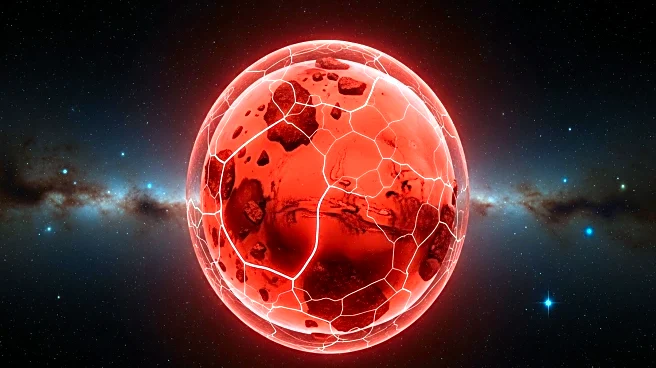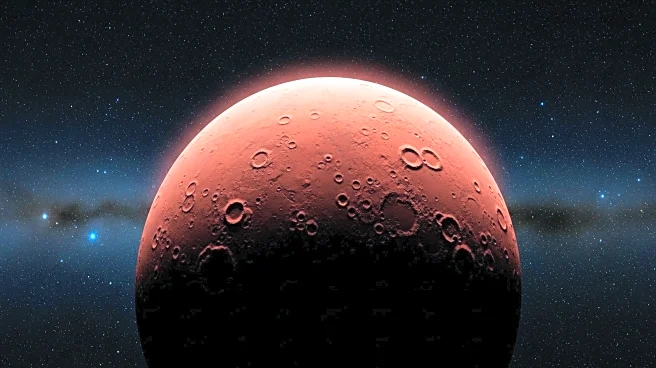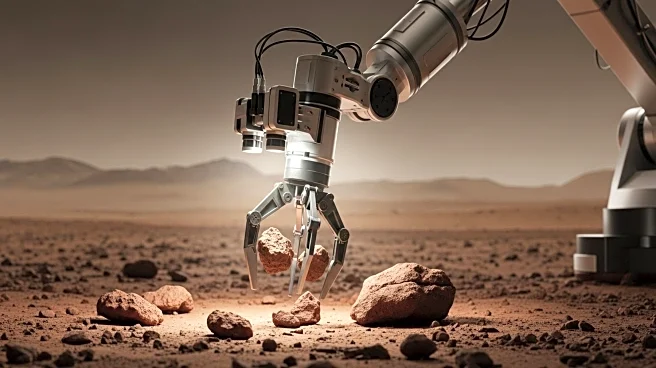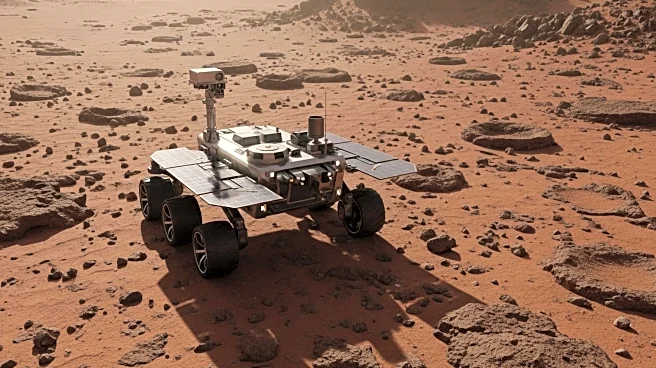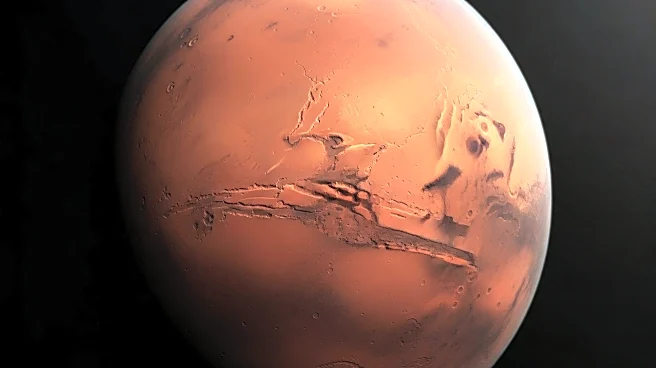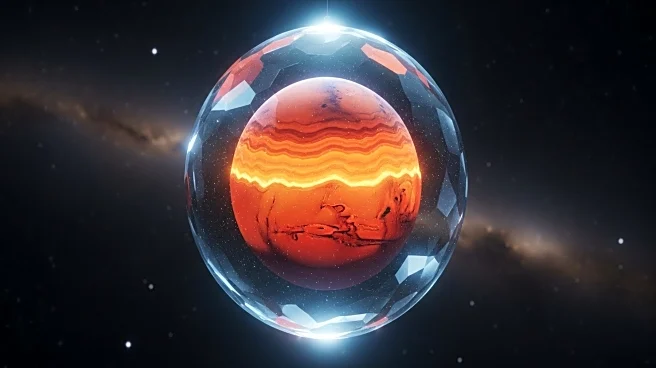What's Happening?
A new study from the University of Zurich suggests that Venus may have been struck by objects the size of Mars, potentially explaining its unique rotation and lack of a moon. Using computational simulations, researchers explored various impact scenarios, finding that such collisions could account for Venus's slow, retrograde rotation and absence of a moon. The study provides insights into the planet's geological history and its current state, characterized by extreme surface conditions and a thick atmosphere.
Why It's Important?
Understanding Venus's history and its current state can provide valuable insights into planetary formation and evolution, offering clues about Earth's past and the potential for life on other planets. The study's findings may influence future space exploration missions and the search for habitable planets. Additionally, the research highlights the role of cosmic impacts in shaping planetary characteristics, contributing to our broader understanding of the solar system.
Beyond the Headlines
The study raises questions about the potential for similar impacts on other planets and their implications for planetary science. It also underscores the importance of continued research and exploration of Venus, which remains one of the least understood planets in our solar system. The findings may inspire new missions to Venus, aimed at uncovering more about its geological and atmospheric conditions.
